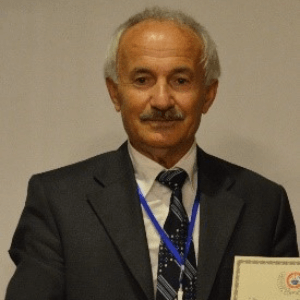Abstract:
Some materials take place in class of advanced smart materials with adaptive properties and stimulus response to the external changes. Shape memory alloys take place in this group, due to the shape reversibility and capacity of responding to changes in the environment. These alloys exhibit a peculiar property called shape memory effect, which is characterized by the recoverability of two certain shapes of material at different temperatures. Shape memory alloys have dual characteristics called thermoelasticity and superelasticity, from viewpoint of memory behavior. Two successive structural transformations, thermal and stress induced martensitic transformations govern shape memory phenomena in crystallographic basis. Thermal induced martensite occurs along with crystal twinning in self-accommodating manner on cooling and ordered parent phase structures turn into twinned martensite structures. Stress induced martensitic transformations occur along with crystal or lattice detwinning reaction by stressing material in low temperature condition. Superelasticity is performed mechanically by stressing and releasing material at a constant temperature in parent phase region, and shape recovery is performed simultaneously upon releasing the applied stress. Superelasticity is performed in non-linear way; stressing and releasing paths are different in the stress-strain diagram, and hysteresis loop refers to energy dissipation. The elementary processes involved in such martensitic transformations are lattice invariant shear, lattice twinning and detwinning. It is well known that crystal twinning and detwinning reactions play a considerable role in shape memory effect and superelasticity. Thermal induced martensitic transformation is lattice-distorting phase transformation occur with the cooperative movement of atoms by means of shear-like mechanism, and martensite variants occur. Martensitic transformations occur by two or more lattice invariant shears on a {110} -type plane of austenite matrix which is basal plane or stacking plane of martensite. Copper-based alloys exhibit this property in metastable beta phase region. Lattice invariant shear is not uniform in these alloys, and cause to the formation of long-period layered martensitic structures with lattice twinning.
In the present contribution, electron diffraction and x-ray diffraction studies performed on two copper- based CuZnAl and CuAlMn alloys. Electron diffraction patterns and x-ray diffraction profiles show that these alloys exhibit super lattice reflections in martensitic condition. Specimens of these alloys aged at room temperature in martensitic condition, and a series of x-ray diffractions were taken duration aging at room temperature. Reached results show that diffraction angles and peak intensities change with aging time at room temperature. Some of the successive peak pairs providing a special relation between Miller indices come close each other, and this result leads to the rearrangement of atoms in diffusive manner.
Keywords: Lattice twinning and detwinning, martensitic transformation, shape memory effect, superelasticity, thermoelasticity
What will audience learn from the presentation?
- Shape memory alloys are sensitive materials to the external conditions, and they are used shape memory elements in many fields from biomedical application to the aeronautical industry. In principle, I introduce the basic terms and definitions related to the shape memory, reversibility, and crystallographic transformation at the multidisciplinary conferences, and tell the experimental results.
Biography:
Dr. Osman Adiguzel graduated from Department of Physics, Ankara University, Turkey in 1974 and received PhD- degree from Dicle University, Diyarbakir-Turkey. He studied at Surrey University, Guildford, UK, as a post doctoral research scientist in 1986-1987, and his studies focused on shape memory alloys. He worked as research assistant, 1975-80, at Dicle University and shifted to Firat University in 1980. He became professor in 1996, and he has been retired due to the age limit of 67, following academic life of 45 years.
He published over 80 papers in international and national journals; He joined over 120 conferences and symposia in international and national level as Plenary Speaker, Keynote Speaker, Invited speaker, speaker or Poster presenter. He served the program chair or conference chair/co-chair in some of these activities. In particular, he joined in last six years (2014 - 2019) over 60 conferences as Speaker, Keynote Speaker and Conference Co-Chair organized by different companies in different countries.
Additionally, he retired at the end of November 2019, and contributed with Keynote/Plenary Speeches over 60 Virtual/Webinar Conferences, due to the coronavirus outbreak in two year of his retirement, 2020 and 2021.
Dr. Adiguzel served his directorate of Graduate School of Natural and Applied Sciences, Firat University in 1999-2004. He supervised 5 PhD- theses and 3 M. Sc theses. He is also Technical committee member of many conferences. He received a certificate which is being awarded to him and his experimental group in recognition of significant contribution of 2 patterns to the Powder Diffraction File – Release 2000. The ICDD (International Centre for Diffraction Data) also appreciates cooperation of his group and interest in Powder Diffraction File.
Scientific fields of Dr. Adiguzel: Shape memory effect and displacive phase transformations in shape memory alloys and other alloys, molecular dynamics simulations, alloy modeling, electron microscopy, electron diffraction, x-ray diffraction and crystallography.


